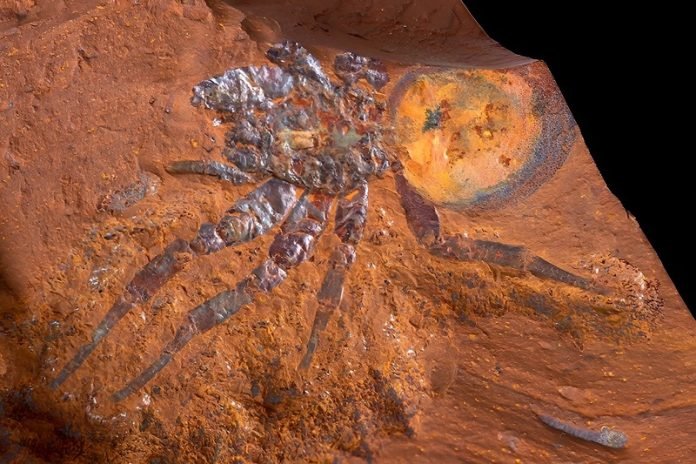
In a groundbreaking discovery, scientists from the Australian Museum (AM) and the University of New South Wales (UNSW) have uncovered a fossil of a giant spider in Australia, shedding light on the intriguing world of ancient arachnids.
The spider, officially named Megamonodontium mccluskyi, existed between 11 and 16 million years ago and has been revealed to the public in a recent publication in the Zoological Journal of the Linnean Society.
The significant find was made at McGraths Flat, NSW, a location known for its unique, iron-rich rock called “goethite.”
Dr. Matthew McCurry, a paleontologist who played a leading role in the study, emphasized the rarity and importance of discovering fossil spiders in Australia, as this marked only the fifth such find across the continent.
This giant spider belongs to a new genus and is the first fossil from the Barychelidae family to be discovered. It bears resemblance to the modern Monodontium, a type of brushed trapdoor spider, but is astonishingly five times larger.
The fossil spider has been named in honor of Dr. Simon McClusky, a Canberra-based geospatial scientist and the discoverer of the specimen, who volunteers his expertise in paleontological excavations.
The discovery is not just a mere addition to the paleontological records; it brings forth crucial information that helps fill gaps in our understanding of spider evolution.
Dr. McCurry highlighted how the scarcity of spider fossils in Australia has posed challenges for scientists trying to piece together the evolutionary journey of spiders.
This finding is significant as it offers insights into spider extinction patterns and the environments they once inhabited.
Interestingly, the closest living relatives of this prehistoric giant are now found in the wet forests spanning from Singapore to Papua New Guinea.
This suggests that similar ecosystems existed in mainland Australia, which have since vanished as the region underwent aridification.
The meticulous detail preserved in the fossils from McGraths Flat allowed researchers to explore even the minute aspects of the spider’s anatomy.
Advanced scanning electron microscopy revealed intricate details of the spider’s claws, legs, pedipalps, and setae, the hair-like structures with diverse functions, including sensing chemicals and vibrations and providing defense against predators.
The newly discovered spider fossil now resides in the AM’s paleontology collection, where it’s accessible online for researchers worldwide to study and explore.
This discovery, along with another discovery of a jumping spider from the same site, is paving the way for a richer understanding of the variety and lifestyles of ancient spiders.
The discovery of Megamonodontium mccluskyi, Australia’s largest fossil spider, opens new windows into the prehistoric world, allowing scientists and the public to connect with the ecological tapestry of our planet’s past.
It paints a vivid picture of the lush, diverse, and mysterious environments that once existed in Australia and provides a fascinating glimpse into the ancient relatives of modern spiders, enriching our appreciation for the intricate web of life that has existed on Earth for millions of years.
Follow us on Twitter for more articles about this topic.
Source: Australian Museum.



